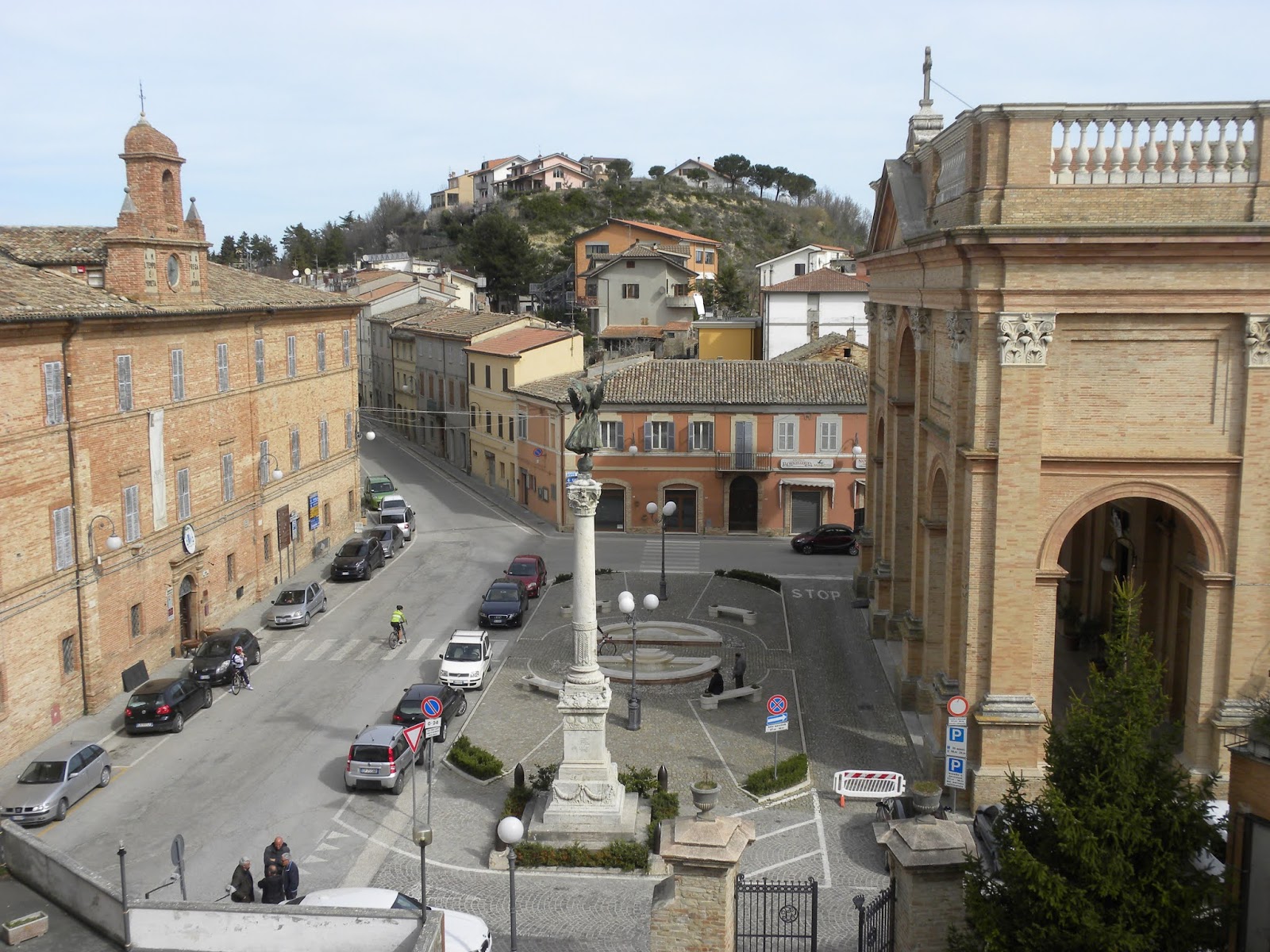Umberto I square
First called Felice Square in honour of the fellow citizen Felice Peretti (Sistus V), it became Umberto I Square in 1900 following the assassination of the King (Umberto) at the Royal Villa of Monza. A plaque placed on a building facing the Town Hall states that Sistus V and Giuseppe Sacconi lived here. The former, in the 16th century as a Bishop and Cardinal, who added the cupola on top of the dome of S. Pietro symbol of Religion; the latter, in the 19th century, who erected in the Campidoglio the Vittoriano, symbol of the Homeland. The monument, inaugurated on 13 August 1922, is dedicated to Sacconi. It is made up of 22 blocks of Carrara marble weighing about 20 tons. The designer was the architect Luigi Morosini and the bust is the work of the sculptor Eugenio Maccagnani: both played a large part in completing the Vittoriano in Rome. The square is overlooked by the historic and former location of the Town Hall, including the Civic Museum; the Art Gallery; the Museum of the Prisons; the Archaeological Museum and the Ethnographic Museum (entitled “The water, the earth, the canvas”), by the Church of S. Nicolò and, on the opposite side, by the building of the Civic Tower.
